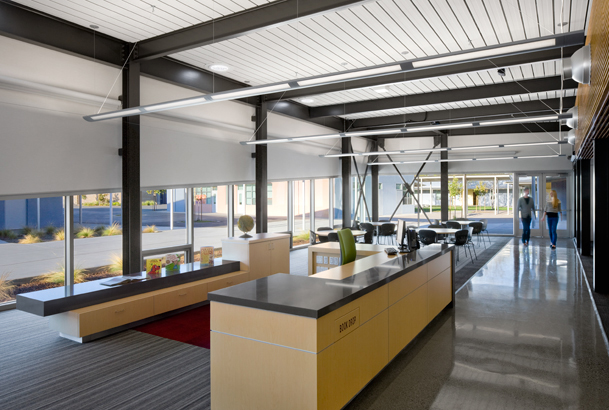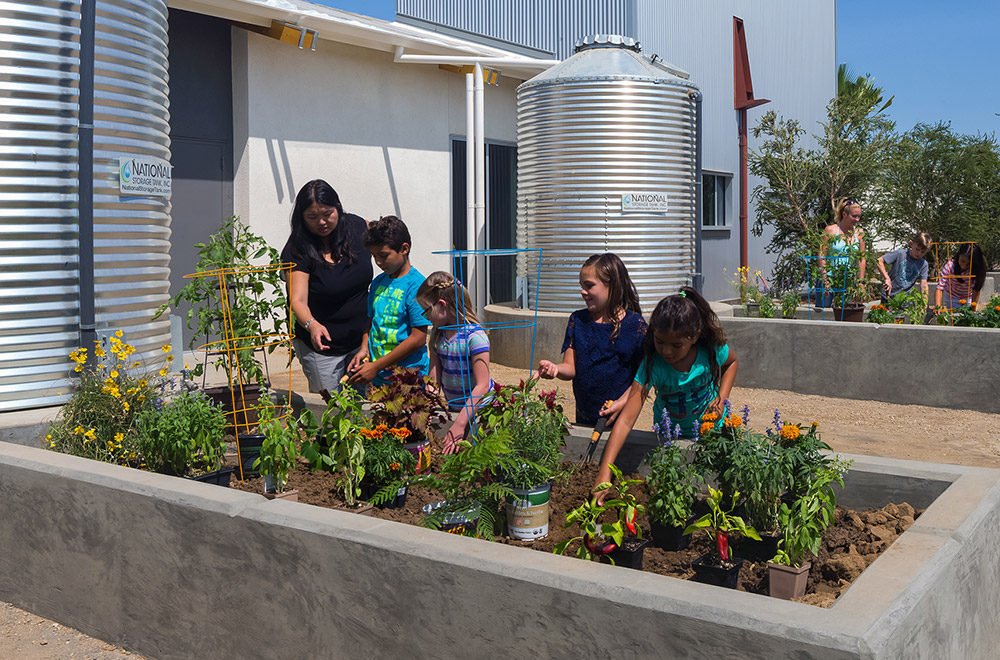The Orchard School Library, designed by HMC Architects, has received LEED Gold certification from the U.S. Green Building Council. Orchard School—an elementary and middle school in northeastern San Jose—sought a sustainable facility to improve its outdated and overcrowded campus library, with the goals of housing their growing book collection, improving student access to technology, and educating students on green buildings and a sustainable future. The project is the first LEED Gold certified K-12 public school building in the City of San Jose and Santa Clara County. Additionally, it is the third LEED Gold certified K-12 public school facility in the State of California.

“The Orchard School Library reaches this high level of sustainable design through the use of a high-performance exterior building envelope, interior day lighting, natural ventilation, photovoltaic panels, upgraded mechanical systems, green-certified interior furnishings and finishes, and water-saving plumbing fixtures,” said David Maglaty, senior project designer at HMC Architects. “The completed project results in an eye-catching library that enlivens the entire school, while being a prime example of sustainable design and construction.”

The Library is centrally located at the heart of the campus and connects the elementary and middle schools. Inside, full-height glass brings natural light into the expanded 6,000-SF space. A natural wood screen defines the space and provides boundaries without compromising supervision. The renovated existing space now houses stacks for the 18,000-volume collection, along with a new technology lab for up to 36 students.
The Orchard School Library sustainable savings include:
– More than 30% water use reduction
– The 240KW PV system produced 420,830 kWh annually, which translates to more than 2.5 times of the building energy cost saving. Essentially, this building is more than a “Net-Zero” building; it is an “Energy-Positive” building.
– Reuse over 95% of existing building floors, walls and roof
– Reuse over 50% of existing interior non-structural elements
– More than 95% of construction waste diverted from landfill
– 100% of wood products used are FSC certified wood
– More than 10% recycled content material value
– More than 76% of regularly occupied area with access to daylight
– More than 97% of regularly occupied area with access to views
– Low-emitting materials used throughout project
